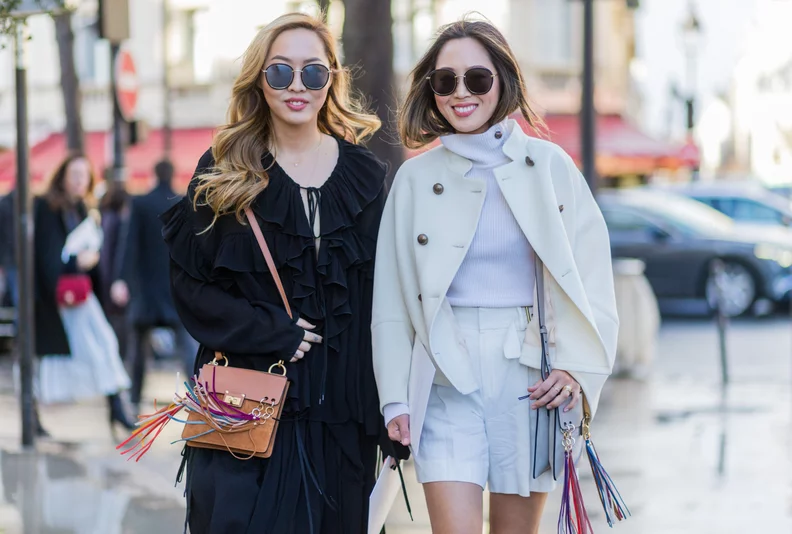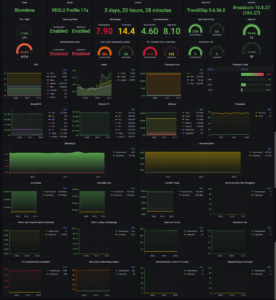Fashion is a universal language, yet it often speaks differently across cultures. In recent years, Asian fashion bloggers have emerged as influential voices in the global style narrative. They not only showcase unique trends but also challenge conventional beauty standards and redefine what it means to be fashionable. From vibrant street styles to elegant traditional wear, these bloggers capture the essence of their diverse backgrounds while influencing audiences worldwide.
As you delve into this captivating world, you’ll discover how Asian fashion bloggers are shaping trends and sparking conversations that resonate far beyond their borders. Ready to explore this dynamic realm? Let’s dive deeper into the rise and influence of these trendsetters who are leaving an indelible mark on the fashion landscape!
The Rise and Influence of Asian Fashion Bloggers
Asian fashion bloggers have surged into the spotlight, carving out a niche that resonates globally. Their unique perspectives blend traditional elements with contemporary styles, showcasing a rich cultural tapestry.
With platforms like Instagram and TikTok, these influencers reach vast audiences. They not only share outfits but also tell stories about culture and identity. This personal touch fosters connections with followers who appreciate authenticity.
The rise of Asian fashion bloggers has sparked conversations around diversity in the industry. Brands are taking note, collaborating with these influencers to tap into their insights and creativity.
Their influence extends beyond aesthetics; they challenge conventional beauty standards. By embracing various body types and skin tones, they inspire others to celebrate individuality rather than conforming to unrealistic ideals.
As they continue to shape trends and narratives in fashion blogging, their impact is felt far beyond Asia’s borders.
Popular Asian Fashion Bloggers to Follow
When diving into the realm of Asian fashion bloggers, several names shine brightly. These influencers have not only captured attention but also created unique styles that resonate globally.
Aimee Song, with her chic aesthetic, combines high-end labels and street style effortlessly. Her blog and Instagram are a treasure trove for those seeking inspiration in layering and accessorizing.
Then there’s Chriselle Lim. Known for her polished looks, Chriselle’s content often merges fashion with lifestyle tips. She showcases how to navigate motherhood while maintaining a stylish edge.
Don’t overlook Nicole Warne from Australia. Her refined taste transforms everyday wear into something extraordinary. Followers adore her ability to blend classic pieces with contemporary trends.
Negin Mirsalehi stands out with her vibrant outfits and engaging personality. She brings a fresh perspective on styling that many find relatable and inspiring. Each of these bloggers offers a distinct approach worth exploring further.
How Asian Fashion Bloggers are Redefining Beauty Standards
Asian fashion bloggers are reshaping the narrative around beauty. They challenge conventional ideals by embracing diverse aesthetics and personal styles that reflect their unique cultures.
Through vibrant outfits, they showcase a blend of tradition and modernity. This fusion encourages followers to appreciate authenticity over conformity. It’s refreshing to see how these influencers celebrate individuality in every post.
Moreover, many Asian fashion bloggers advocate for body positivity. They promote self-love and confidence in all shapes and sizes, inspiring others to embrace their own features unapologetically.
In doing so, they cultivate a sense of community among their audiences. Followers find solace in shared experiences as they explore what beauty means beyond societal expectations.
The impact is profound: standards are shifting toward inclusivity. With each blog post or social media update, these creators invite everyone to redefine what it means to be beautiful on their own terms.
Trends in Asian Fashion Blogging
Asian fashion blogging is constantly evolving, showcasing vibrant trends that reflect diverse cultures. One prominent trend is the blend of traditional attire with modern styles. Bloggers are creatively merging heritage pieces with contemporary fashion, providing fresh perspectives.
Sustainability has also emerged as a key focus. Many Asian fashion bloggers advocate for eco-friendly practices, promoting thrifting and supporting local artisans. Their influence encourages followers to be more conscious about their clothing choices.
Social media platforms play a crucial role in shaping these trends. The rise of TikTok and Instagram allows bloggers to connect directly with audiences through engaging content like styling tips or outfit challenges.
Street style photography is gaining traction too. Capturing real-life looks from bustling city streets offers authenticity and relatability, making it easier for followers to replicate those outfits in their own lives.
Challenges Faced by Asian Fashion Bloggers
Asian fashion bloggers encounter a unique set of challenges in the digital landscape. Cultural expectations often weigh heavily on their content creation. Balancing personal style with societal norms can be daunting.
Language barriers also pose difficulties. Many Asian bloggers navigate multiple languages, which can hinder communication with global audiences. This challenge sometimes limits their reach and engagement.
The pressure to conform to specific beauty standards is intense as well. While they strive for authenticity, external expectations about appearance can create stress and self-doubt.
Navigating sponsorship deals presents another hurdle. Brands may not fully understand the nuances of different cultures, leading to mismatched collaborations that don’t resonate with followers.
Additionally, competition is fierce within the blogging community itself. Standing out requires relentless creativity and innovation while staying true to one’s roots and identity.
The Future of Asian Fashion Blogging
The future of Asian fashion blogging is bright and full of potential. As digital platforms evolve, so do the voices within this vibrant community. New technologies, such as AR and AI, are shaping how content is created and consumed.
Emerging trends suggest a shift towards more sustainable fashion practices. Bloggers are increasingly championing eco-friendly brands and ethical choices. This could lead to a deeper connection with audiences who value transparency.
Moreover, collaborations between bloggers and traditional fashion houses may become more common. These partnerships can help bridge cultural gaps while promoting diverse aesthetics on global stages.
As social media continues to flourish, micro-influencers will gain traction too. Their authentic connections with followers allow for niche markets to thrive in unexpected ways.
With this evolution comes new challenges like platform saturation. Yet, it also opens doors for creativity that resonates deeply with younger generations seeking individuality through style.
Conclusion
Asian fashion bloggers have made a significant impact on the global style landscape. Their unique perspectives and diverse backgrounds bring fresh ideas to fashion. As they continue to challenge traditional norms and redefine beauty standards, their influence only grows.
The future looks bright for this vibrant community of creators. With advancements in technology and shifts in consumer behavior, Asian fashion bloggers are poised to lead the charge toward a more inclusive representation of style. They inspire others by showcasing personal narratives that resonate beyond borders.
As we explore this exciting world, it’s clear that Asian fashion bloggers are not just shaping trends; they’re setting new benchmarks for authenticity and creativity in the industry. Following their journeys offers endless inspiration for anyone passionate about fashion, making it an exhilarating time to be part of this evolving narrative.




